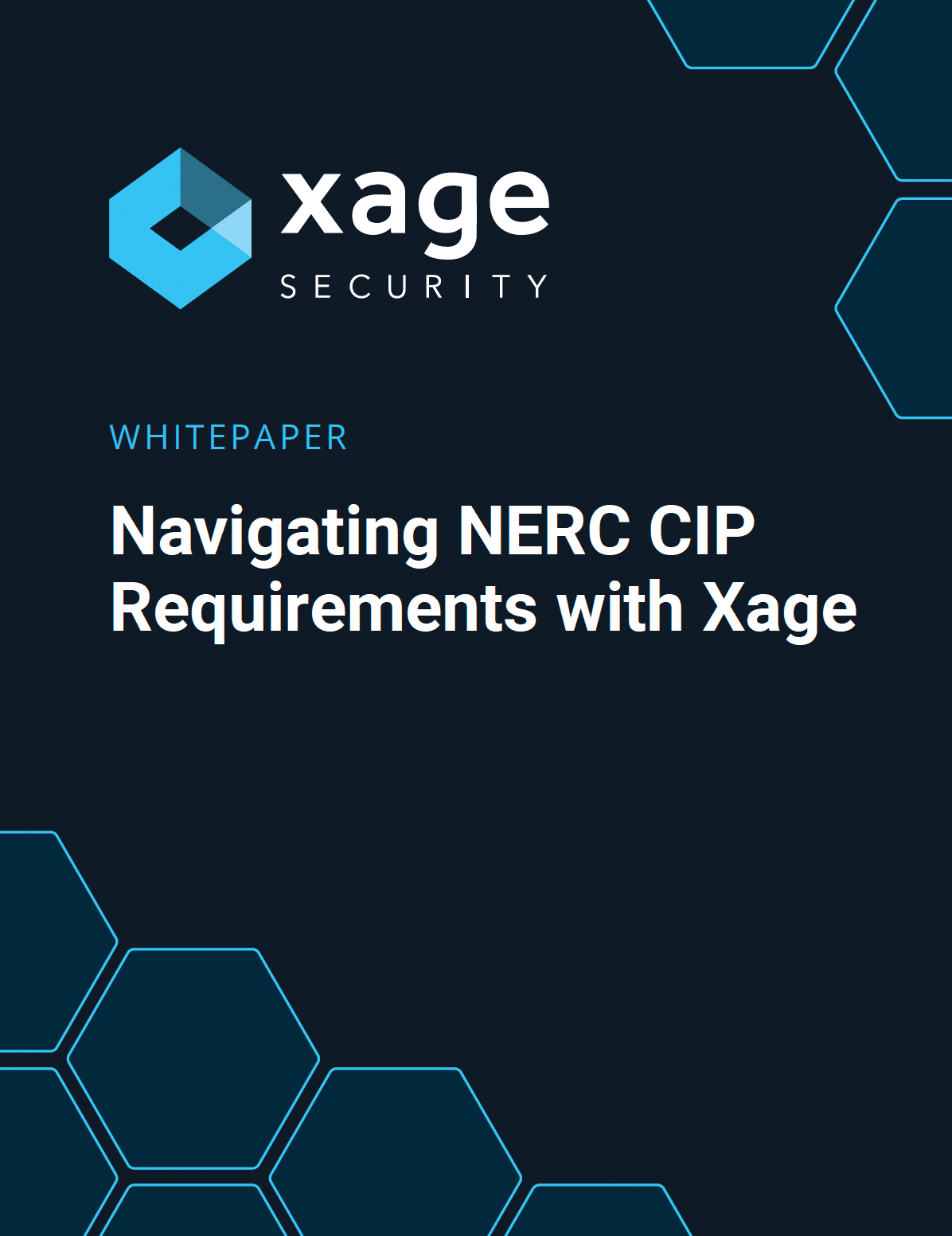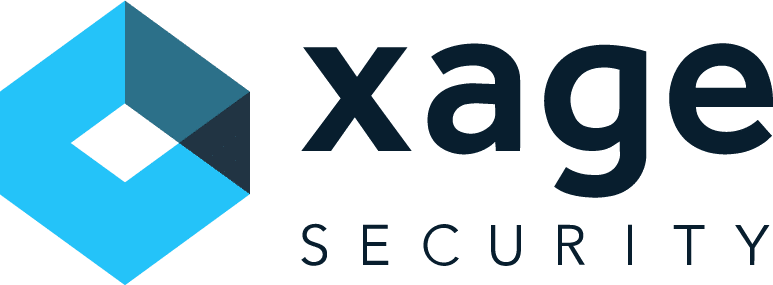Author: Amit Pawar, VP of Consulting and Services, Xage Security
Cooperative and municipal utilities across North America face a dual challenge: evolving cybersecurity threats and increasing compliance obligations. Recent updates to the NERC Critical Infrastructure Protection (CIP) standards – slated for enforcement in 2024–2025 – will broaden the scope of required controls and scrutiny. At the same time, limited resources and aging operational technology (OT) systems make it hard for small utilities to keep up. This article examines the latest CIP revisions (CIP-003-9, CIP-005-7, CIP-010-4, CIP-013-2), real-world risk challenges like transient asset management and flat OT networks, and how a unified security approach can help. The goal is a technically accurate roadmap for CISOs, compliance officers, utility board members, and OT engineers to strengthen cyber defenses without drowning in complexity.

New NERC CIP Requirements: 2024–2025 Updates
NERC’s latest CIP updates introduce stricter security measures that expand compliance requirements for traditionally “low-impact” systems and sharpen controls for remote access, patching, and supply chain risk management. Key changes include:
- Low-Impact Assets in Scope: CIP-003-9 extends mandatory controls to assets previously deemed low-impact. Utilities operating smaller substations or distributed energy resources must now implement defined security management plans. For example, CIP-003-9 requires policies to mitigate malware on Transient Cyber Assets (TCAs) like contractor laptops (e.g. ensuring antivirus or whitelisting is in use) and to enforce vendor remote access controls for low-impact systems. In short, even the “little guys” on the grid need baseline protections against infected portable devices or unchecked vendor connections.
- Stronger Remote Access Controls: CIP-005-7 focuses on interactive remote access to medium/high impact assets. It introduces new requirements (R2 Parts 2.4 and 2.5) to identify and disable active vendor remote access sessions on BES Cyber Systems. Additionally, multi-factor authentication (MFA) is reinforced as a necessity for all remote logins – even many assets that were formerly classified as low-risk now demand MFA for remote access. These measures harden defenses against unauthorized access by ensuring vendors and operators use authenticated, monitored connections into critical OT networks.
- Enhanced Patching and Configuration Management: CIP-010-4 augments configuration and change management practices. A new section requires verifying the integrity and authenticity of software updates and patches before installation. In practice, this means utilities must obtain updates from trusted, authenticated sources and use hashing or digital signatures to confirm nothing malicious has been introduced. CIP-010-4 also emphasizes timely vulnerability assessment and secure configuration baselining, closing gaps that could allow unpatched vulnerabilities or unauthorized changes to persist in control systems.
- Tighter Supply Chain Security: CIP-013-2 expands supply chain risk management obligations. It now explicitly includes not just BES Cyber Systems but also associated Electronic Access Control/Monitoring Systems (EACMS) and Physical Access Control Systems (PACS) in the scope of supply chain security plans. Utilities must scrutinize vendor practices for a wider range of equipment and software. The updated standard also aligns with the new remote access rules – ensuring utilities address the risk of vendor-initiated remote connections and malicious updates as part of procurement and vendor management. In essence, CIP-013-2 compels utilities to verify their vendors’ security (e.g. conduct supply chain due diligence, insist on secure patch delivery) and to audit third-party remote access to critical systems.
These CIP revisions aim to shore up the electric grid’s defenses by leaving fewer blind spots. Assets once considered too small to threaten the Bulk Electric System now get more attention, reflecting how coordinated attacks on multiple distributed sites could aggregate into a big impact. Requirements for detecting and stopping vendor remote sessions, using MFA, and tracking software integrity all address known attack vectors exploited in recent years. For co-op and municipal utilities, the message is clear: compliance isn’t just a paperwork exercise, but a necessary baseline for security. Next, we turn to how these rules intersect with everyday challenges in utility operations.
Cyber Risk Challenges in Daily Operations
Implementing CIP compliance in the field comes with real-world challenges. Many smaller utilities operate with tight budgets and lean teams, which can make comprehensive cybersecurity seem daunting. Here are some of the top risk and compliance challenges co-op and municipal utilities face:
- Transient Cyber Assets (TCA) Management: Contractor laptops, engineer USB drives, and test equipment often plug into OT networks temporarily. These TCAs pose a high risk of introducing malware into control systems. CIP standards now require mitigation (like malware scans, antivirus updates, or whitelisting on such devices) before they connect. In practice, however, ensuring every field technician’s laptop is up-to-date and clean is difficult. Some utilities resort to manual checklists or “admit by exception” policies that are hard to enforce consistently. This is a gap attackers can exploit if, say, a contractor’s infected laptop gains access during a maintenance session. The challenge is finding a way to automate and enforce TCA security without halting vital work.
- Flat OT Networks: It’s common for smaller utility OT environments to have minimal network segmentation – essentially “flat” networks where many devices can communicate unfettered. Flat networks simplify operations but also allow a single compromised node to spread malware or enable lateral movement across an entire substation or plant. Lack of internal segmentation was a contributing factor in past ICS incidents, where once an attacker breached one device, they could traverse to more critical systems. Creating segmented OT enclaves or zones is recommended, but retrofitting segmentation onto an existing control network (with legacy devices and protocols) can be complex and expensive. Nonetheless, new compliance expectations around electronic access controls even at low-impact sites push utilities to rethink the flat network model.
- Resource Constraints: Unlike large investor-owned utilities, co-ops and municipal utilities have limited budgets and small cybersecurity teams (if any dedicated staff at all). Many co-ops are not-for-profit and operate on thin margins, so every new tool or compliance program cost ultimately hits ratepayers. Personnel wear multiple hats – the same engineer might be managing SCADA systems and handling CIP documentation. This makes it challenging to implement advanced security measures or keep up with the paperwork of compliance. Training and retaining staff who understand both OT and IT security is another hurdle. Resource constraints are a root cause behind many utilities only meeting the bare minimum CIP requirements, and even then struggling with maintenance, updates, and evidence collection.
- Storm-Related Contractor Access: During major storms or emergencies, small utilities often bring in contractors or mutual aid crews to restore power quickly. These crews might need temporary access to OT systems (e.g., SCADA or relay controls) to assist with restoration. Granting secure access on short notice is tricky – creating accounts, issuing VPN/MFA tokens, ensuring least privilege, then disabling access after the work is done. In the rush of emergency response, normal cybersecurity procedures might be bypassed, creating exposure. Attackers know that during disasters, organizations may lower their guard. A real concern is that threat actors could spoof or compromise a contractor during a storm response. CIP standards do allow “CIP Exceptional Circumstances” for emergencies, but still require retrospective mitigation and documentation. The challenge is enabling rapid but secure access for ad-hoc users, without adding undue burden in a crisis.
- Audit Fatigue: For utilities subject to NERC CIP, the compliance cycle is continuous. There are annual self-certifications, periodic audits, spot checks, and evidence requests that can feel endless. Utilities must generate piles of documentation: network diagrams, access lists, patch records, user access reviews, incident response drill logs – the list goes on. Over time, this leads to audit fatigue, where staff feel they are constantly preparing for or responding to auditors instead of improving security. In some cases, separate tools are used to satisfy each CIP requirement, resulting in duplicated effort and complex reporting. This fatigue can breed a “check-the-box” mentality, focusing on passing audits rather than truly reducing risk. It’s a significant challenge to turn compliance data gathering into an efficient, automated process so that audits are a byproduct of good security rather than a distinct ordeal.
From Point Solutions to Unified Security: A Better Path
Historically, many utilities have layered point security solutions to meet specific CIP requirements – for example, one product for password management, another for network monitoring, a separate jump-host for remote access, etc. While each tool can address a particular need, this patchwork approach has serious drawbacks:
- Siloes and Overlaps: Disparate tools often don’t integrate well, leading to security gaps or redundant controls. One system might log remote access, another monitors network traffic, but without correlation, an incident can slip by. Moreover, maintaining many single-purpose systems is inefficient for a small team. A fragmented approach creates the very silos that can result in duplicated effort and compliance headaches.
- Complexity and Human Error: Juggling multiple consoles and configurations increases the chance of mistakes. For instance, if access revocation for a departing contractor involves updating five different systems (VPN, Active Directory, badge system, firewall rules, etc.), it’s easy to miss one – leaving a backdoor open. Solution sprawl also makes it harder to enforce policies uniformly. A recent industry report found that having too many separate OT security tools makes it challenging to reliably implement and enforce security controls across IT/OT environments. In contrast, a consolidated platform can apply policies across the board consistently.
- Higher Costs for Diminishing Returns: Each point solution brings licensing fees, hardware or VMs, deployment projects, and training requirements. Small utilities often can’t afford a full suite of enterprise-grade tools, or if they do invest, they may not fully utilize each tool’s capabilities. The cost and effort of integrating multiple products can outweigh the benefits, and still leave blind spots if certain niche risks aren’t covered. Simply put, buying more boxes doesn’t automatically equal better security – especially if those boxes aren’t talking to each other.
Given these limitations, many experts now advocate for a unified cybersecurity platform approach. Instead of a maze of point products, the idea is to use an integrated solution that covers multiple security functions under one umbrella. A unified approach can dramatically simplify both operations and compliance. According to Fortinet’s OT security research, a consolidated platform helps organizations reliably enforce policies and streamline compliance by reducing complexity. When tools are designed to work together, utilities can automate routine tasks and gain a single source of truth for security monitoring and audit data. This not only improves security (through better visibility and faster incident response) but also alleviates the burden on stretched teams.
Zero Trust for OT Networks: “Never Trust, Always Verify”
What is Zero Trust? Zero Trust is a security model that assumes no user or device should be inherently trusted, whether they are outside or inside the network perimeter. “Never trust, always verify” is the mantra. In practice, this means every access request in the OT environment must be authenticated, authorized, and validated each time, and network segments are locked down by default. This philosophy is especially pertinent for industrial control systems because traditional OT architectures often presumed internal network traffic was trustworthy. Now, with increased connectivity between IT and OT, and threats regularly bypassing perimeter defenses, Zero Trust in OT ensures that having breached one device doesn’t grant an attacker free rein over the rest of the network.
Key Zero Trust Measures for OT
Implementing Zero Trust security in operational technology involves several complementary practices and technologies:
- Strict Identity Verification & Least-Privilege Access: Only authenticated, authorized users and devices should ever communicate with OT systems. Every user or machine attempting to access a controller, relay, or HMI must prove its identity and have explicit permissions for the specific resources needed. No connection is allowed by default – in other words, nobody gets in unless they are verified and their access is justified. By ensuring that engineers, vendors, or even other machines can only reach the assets essential for their role, Zero Trust greatly limits the potential attack pathways in the network. This principle of least privilege reduces the OT attack surface and helps prevent unintended access to critical devices.
- Multi-Factor Authentication (MFA): Verifying identity is not a one-step process. MFA is a core Zero Trust capability that adds additional layers of proof for anyone accessing sensitive OT systems. Even if a password is stolen or guessed, an attacker cannot log in without the second factor (for example, a physical token or biometric check). Requiring two or more authentication factors for remote and on-site privileged access significantly hardens OT environments against phishing and credential theft – which aligns directly with NERC’s new mandate for MFA under CIP-005.
- Micro-Segmentation & Network Access Control: Zero Trust architecture breaks the network into secure zones and tightly controls traffic between them. Rather than a flat OT network where malware can spread easily, micro-segmentation enforces that devices and applications can only communicate along pre-approved pathways. This containment strategy means that even if one substation device is compromised, the threat cannot “pivot” laterally to other equipment. By preventing unauthorized device-to-device communication, micro-segmentation helps meet CIP requirements (like Electronic Security Perimeters and access control in CIP-005) and limits the blast radius of any breach.
Implementing these Zero Trust measures in OT can be challenging – legacy industrial devices may not natively support modern security controls, and operations teams understandably worry about disrupting critical processes. However, new tools and platforms are emerging to bridge that gap. Importantly, the effort to “bake in” Zero Trust aligns closely with the CIP goals: verifying identities (CIP-005 remote access, CIP-004 personnel auth), ensuring system integrity (CIP-010 change management), limiting access to need-to-have (CIP-007 system access control), and monitoring continuously (CIP-005 and CIP-015). In short, Zero Trust provides a strategic blueprint that not only enhances security but also inherently checks many CIP compliance boxes.
Challenges and Opportunities for Co-op and Municipal Utilities
Adopting these advanced security practices can be especially daunting for cooperative (co-op) and municipal utilities, which often have smaller staffs and budgets than large investor-owned utilities. Historically, a small co-op might have assumed that its modest size and rural profile kept it “under the radar” of cyber adversaries. In reality, however, no utility is too small to be targeted. Automated malware campaigns and opportunistic hackers will exploit any vulnerable system they can find, regardless of the organization’s size. In fact, if a determined attacker can infiltrate a lightly defended co-op, they might use it as a stepping stone into larger interconnected grid networks – meaning a breach at a small utility can potentially cascade into bigger problems. Thus, co-ops are just as obligated to secure their OT environments, both for their own operations and the broader grid’s sake.
Another challenge is resource constraint. Co-op utilities must meet the same CIP standards for critical infrastructure protection and uphold the reliability commitments to their member communities, but they must do so with far fewer personnel and financial resources. The new requirements – from implementing MFA and network monitoring to managing supply chain security – can strain a small IT/OT team that is already wearing multiple hats. Compliance tasks like maintaining detailed audit logs, updating numerous devices, and continuously tracking user access can be overwhelming if done manually or with disjointed tools. This heavy workload raises the risk of human error and compliance gaps, which could lead to violations or, worse, security incidents that the rules are meant to prevent.
Leveraging Zero Trust Solutions
The good news is that the same Zero Trust approach which improves security can also streamline compliance efforts. For co-ops, a unified cybersecurity platform or framework can be a force-multiplier – allowing a small team to manage robust controls through automation and central management. For instance, rather than deploying one product for VPN access, another for asset monitoring, and yet another for managing passwords, a single integrated Zero Trust fabric can cover multiple bases. Modern OT security platforms now combine capabilities such as MFA enforcement, role-based access control, secure remote access gateways, encrypted file transfer for patches, device identity management, and granular policy enforcement in one solution. By using such a unified approach, co-ops can ensure all NERC CIP requirements are addressed without the complexity of juggling numerous point solutions.
Equally important, these platforms are designed to scale and adapt. A good Zero Trust system can protect a small low-impact substation and a large medium-impact power plant alike under the same framework. This means a cooperative can invest in a solution that grows with them – securing new sites or higher-impact assets if their role in the grid expands – without a complete overhaul. Scalability also matters for performance: the security controls should not slow down operations, whether monitoring 50 devices or 5,000. By continuously verifying every access request and isolating each segment of the network, a Zero Trust architecture ensures that even as the co-op’s infrastructure evolves, it stays compliant with CIP-005 access controls and CIP-010 system integrity rules. At the same time, built-in session recording, logging, and alerting features automate much of the compliance reporting. Instead of engineers manually collecting evidence before an audit, the system can provide tamper-proof logs of all remote access sessions, password changes, software updates, and so on. This not only reduces the administrative burden but also gives small utilities continuous insight into their security posture – a big win for both compliance and cyber defense.
Conclusion: A Path Forward with Zero Trust
As NERC CIP standards tighten and cyber threats grow, electric co-ops have a critical opportunity to modernize their security in step with compliance. Embracing Zero Trust for OT is a wise investment that pays off in multiple ways: it helps prevent devastating breaches, simplifies the demonstration of compliance, and builds confidence among regulators, partners, and customers that the utility’s operations are well protected. Rather than viewing CIP mandates as just a checkbox exercise, co-ops can leverage them as a catalyst to implement lasting security improvements.
One practical step forward is adopting a platform that delivers all necessary Zero Trust capabilities tailored to the operational technology environment — without adding complexity or cost burden. This is where Xage Security stands out.
Xage’s Zero Trust Fabric is not just another security product — it is a unified platform designed specifically for critical infrastructure operators like co-ops and municipal utilities. It combines identity-based access control, secure remote connectivity, MFA enforcement, micro-segmentation, policy automation, and built-in privileged access management — all delivered in one solution that reduces both capital expenses and operational overhead.
By consolidating multiple functions into a single platform, Xage enables even lean utility teams to automate access control, monitor activity, enforce CIP policies, and streamline audits — without deploying and managing a tangle of disconnected tools. Whether protecting a low-impact substation or a large-scale generation site, the platform scales seamlessly and ensures compliance is a natural outcome of strong security.
In short, Xage provides the Zero Trust foundation that co-op and municipal utilities need — not just to meet NERC CIP 2025, but to harden their entire OT landscape against evolving cyber threats. With the right strategy and the right platform, even the smallest utility can build enterprise-grade resilience — efficiently, affordably, and without compromise.

WHITEPAPER
Navigating NERC CIP Requirements with Xage
Download the whitepaper for a deeper dive into the new NERC CIP requirements — who’s affected, what’s required, and how utilities can respond effectively with Xage
References
- NERC, CIP-003-9 – Cyber Security: Security Management Controls (2023).
- NERC, CIP-005-7 – Cyber Security: Electronic Security Perimeter(s), Draft R2 Parts 2.4-2.5 (2024).
- NERC, CIP-010-4 – Cyber Security: Configuration Change Management & Vulnerability Assessments, Part 1.6 (2024).
- NERC, CIP-013-2 – Supply Chain Risk Management: Summary of Changes (2020).
- U.S. Government Accountability Office, Critical Infrastructure Protection: Actions Needed to Address Significant Cybersecurity Risks Facing the Electric Grid (GAO-19-332, 2019).
- U.S. Department of Energy, State Energy Security Plan Framework & Guidance – mutual-assistance coordination (2023).
- National Rural Electric Cooperative Association, Electric Co-ops Work to Strengthen Cyber Workforce (Feb 2025).









